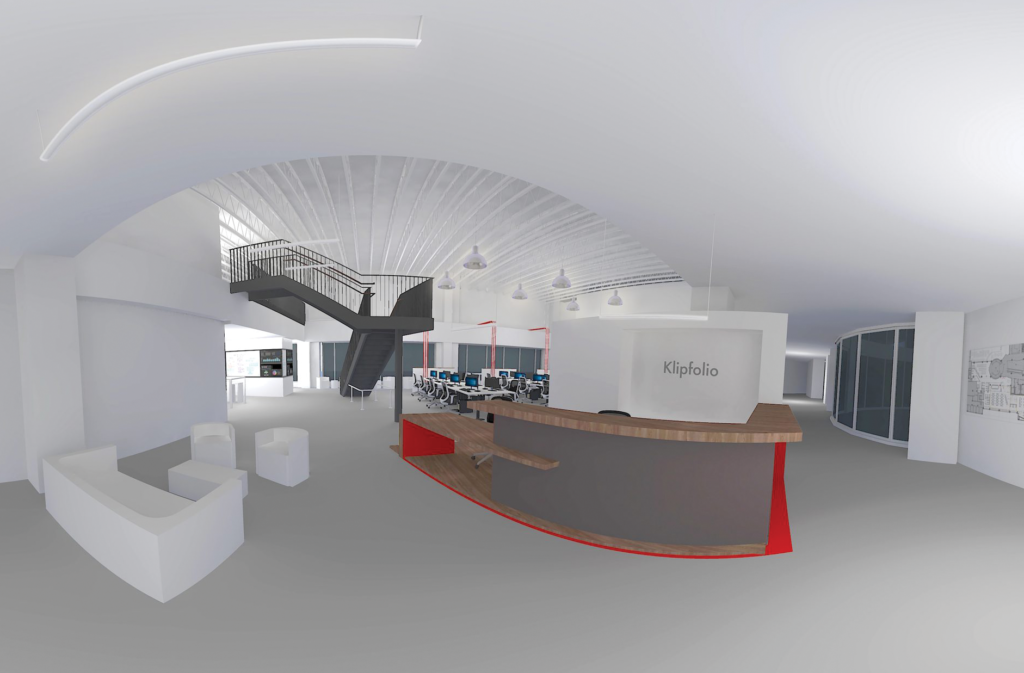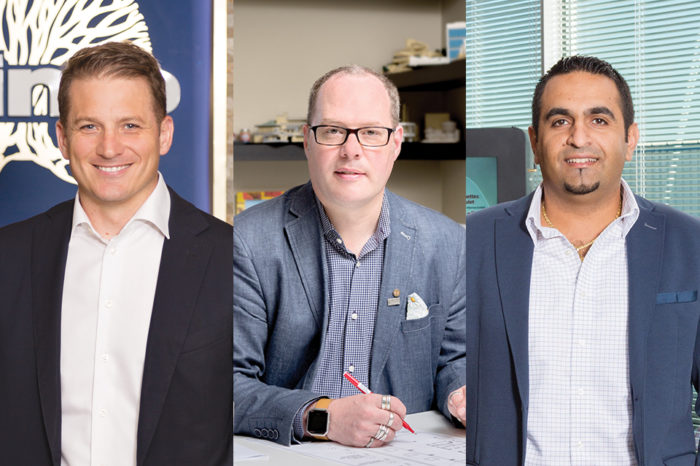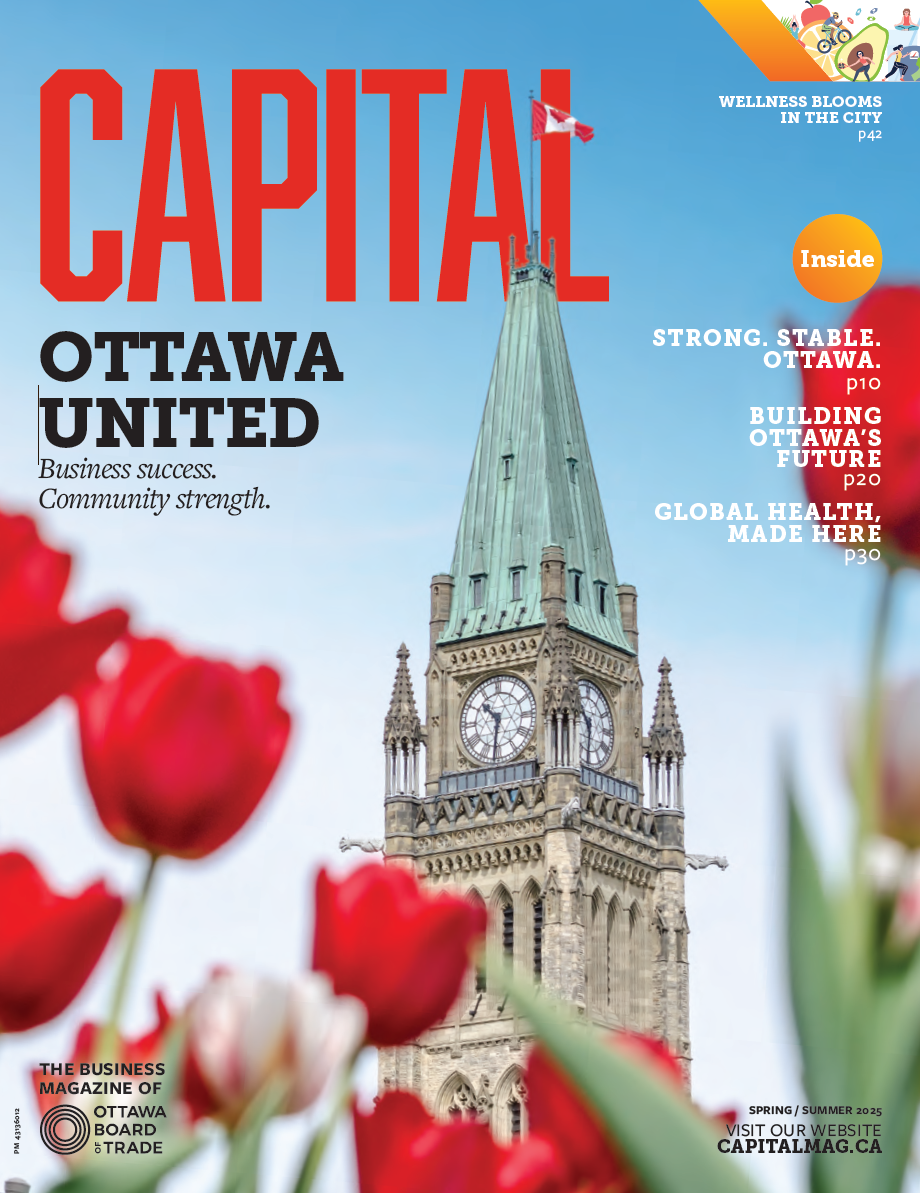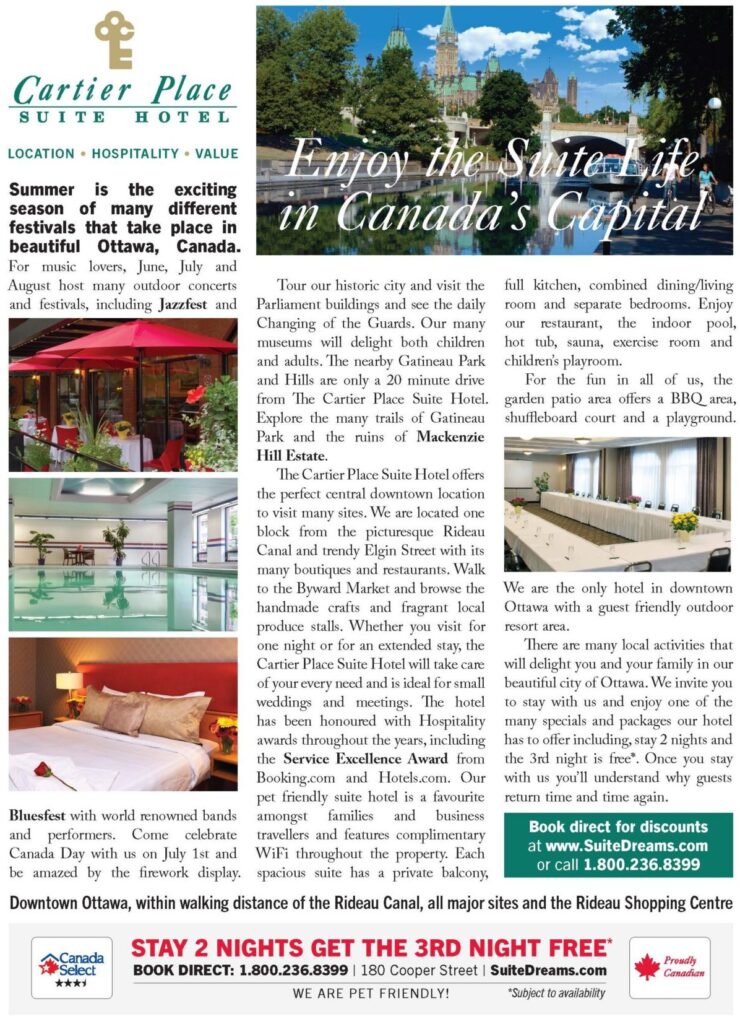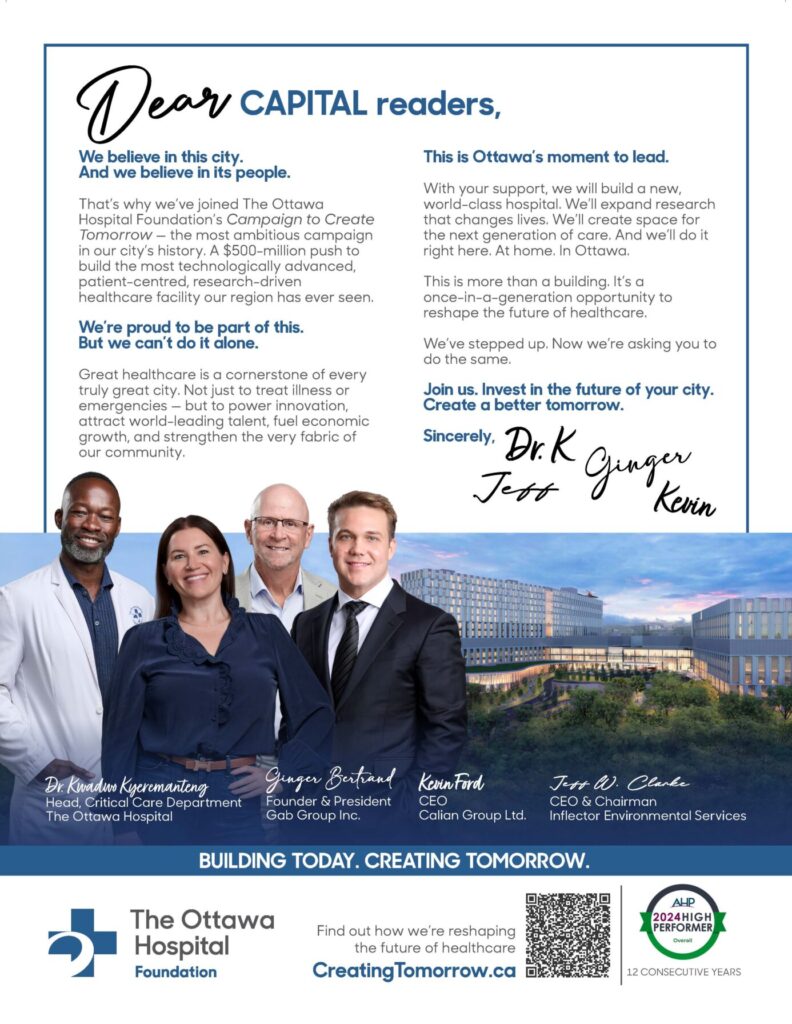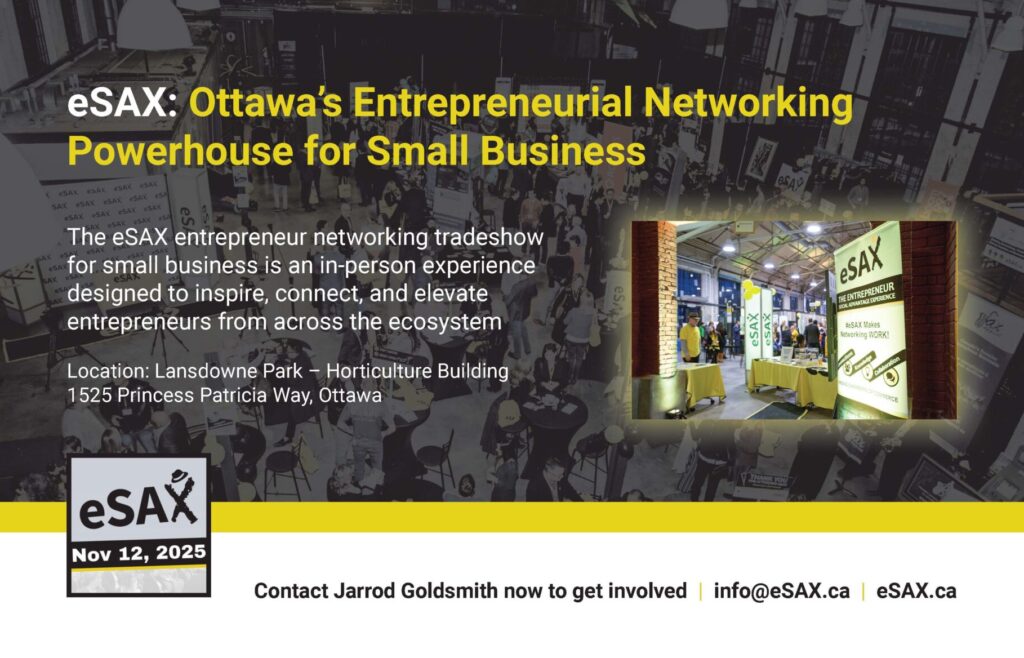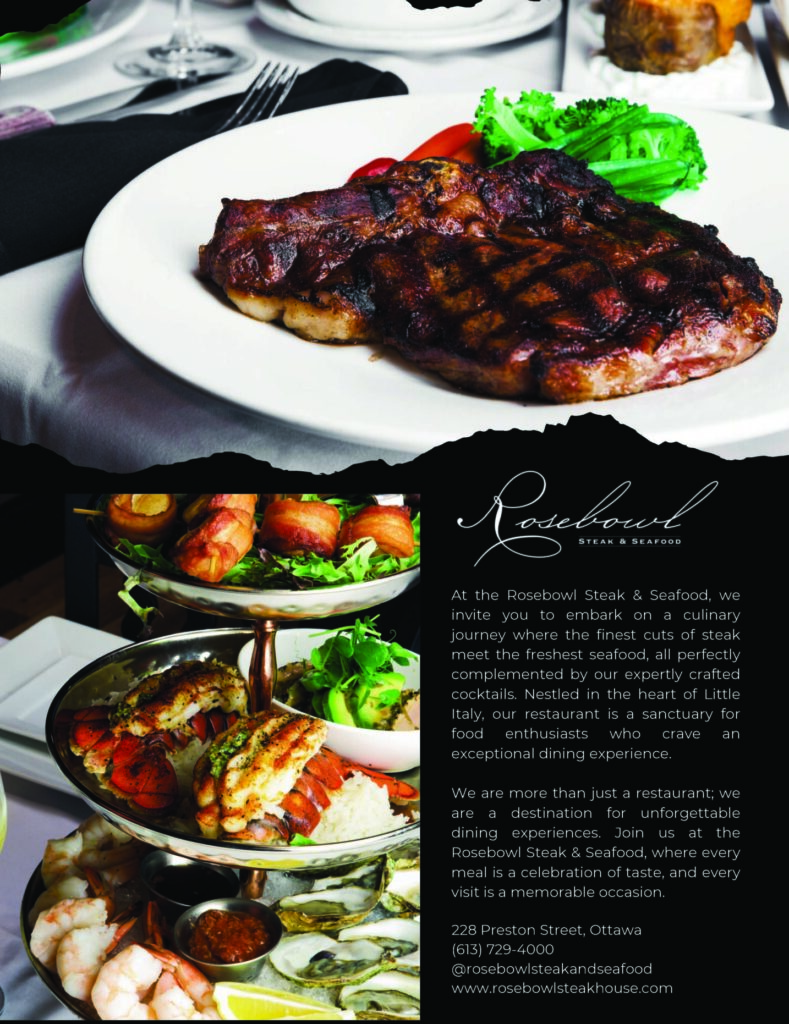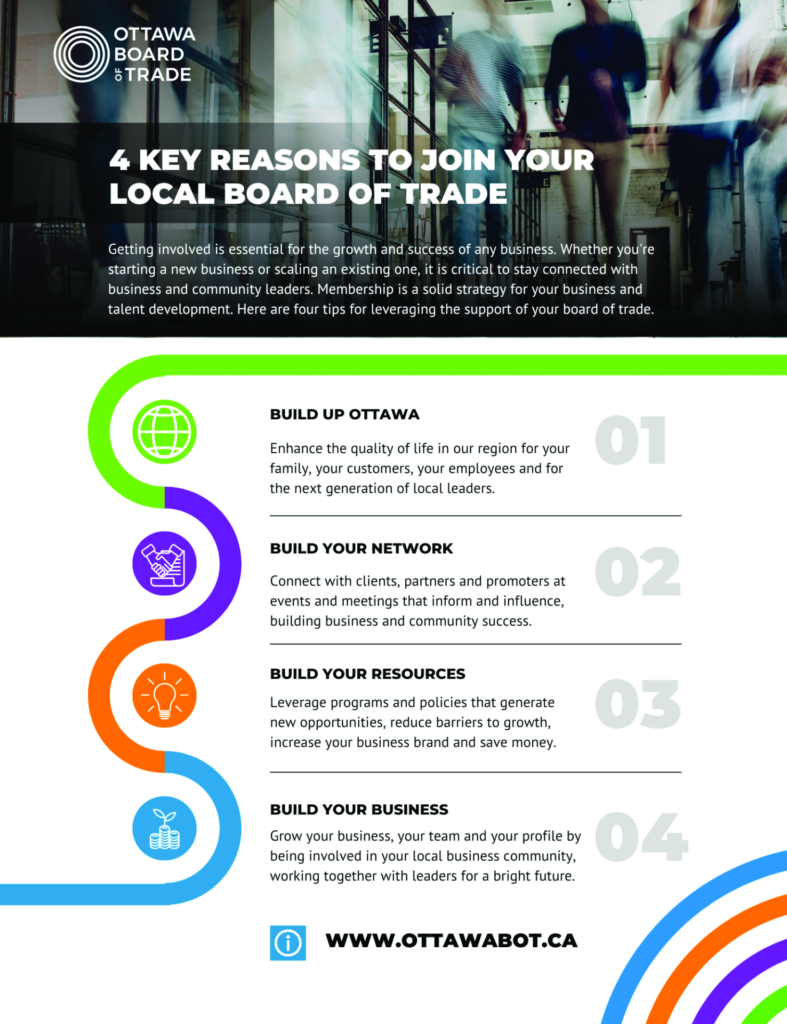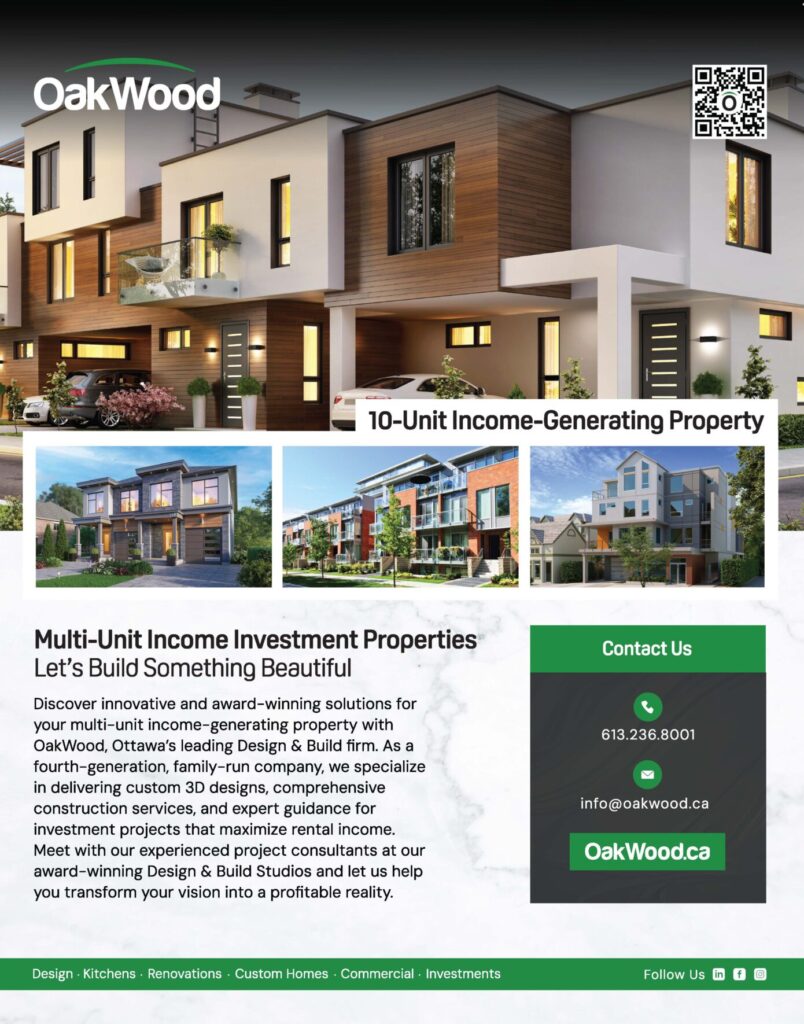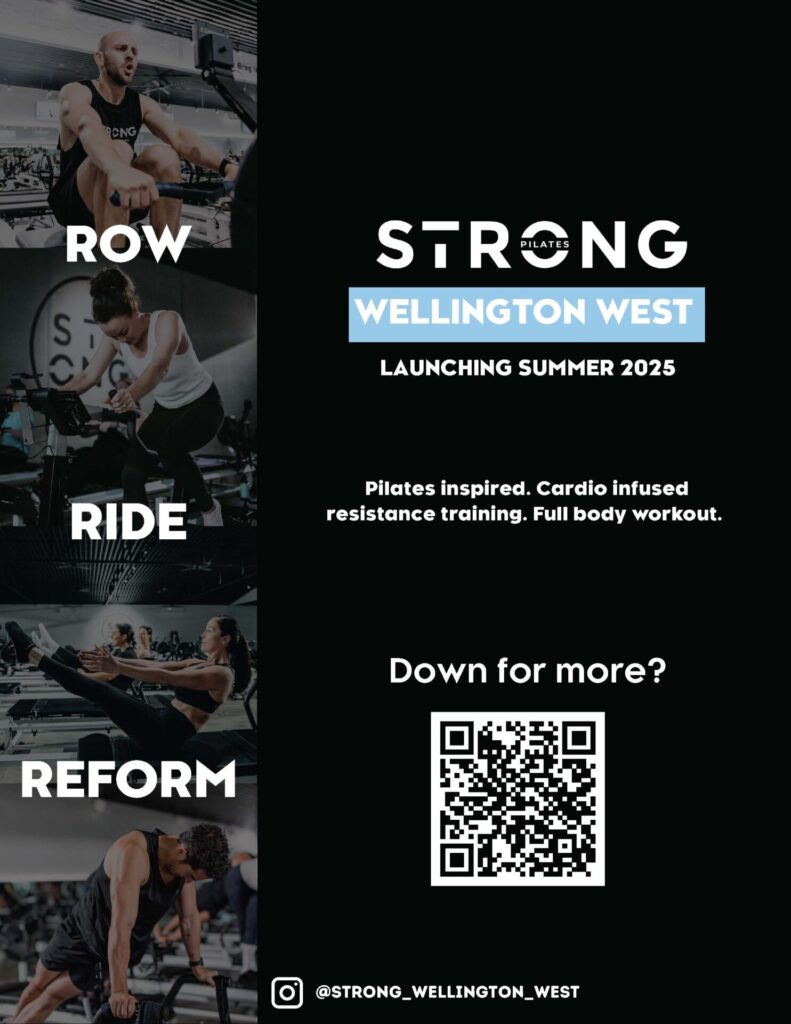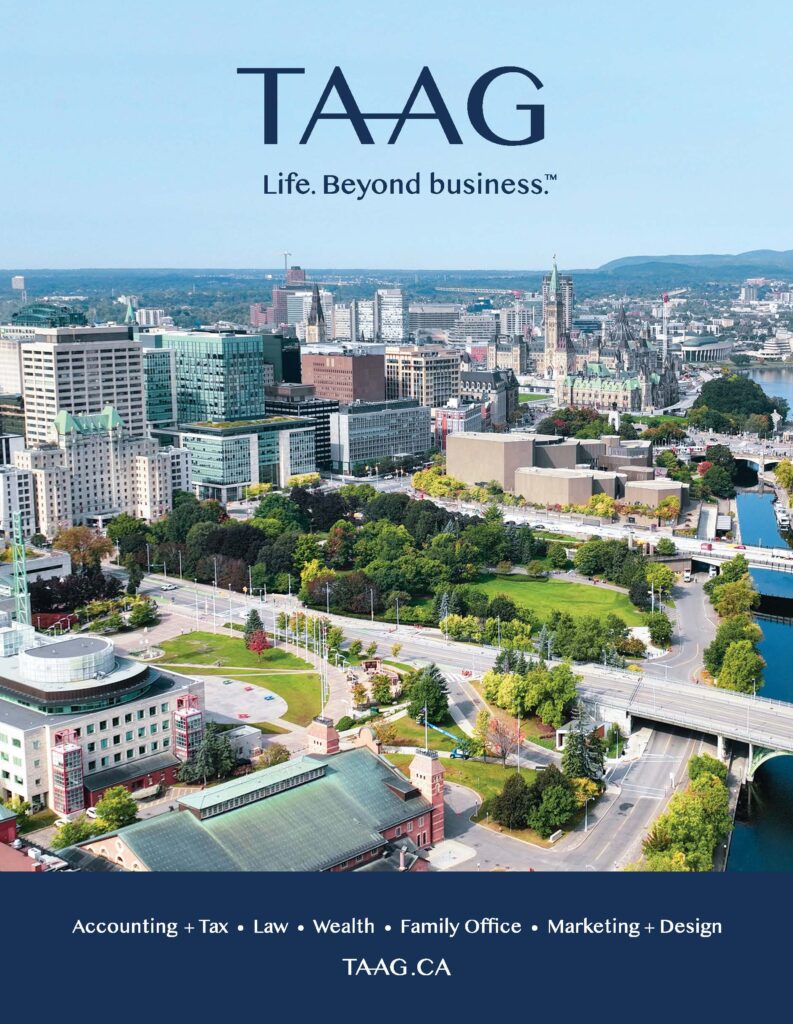Capital Context – Workspace Design that Works
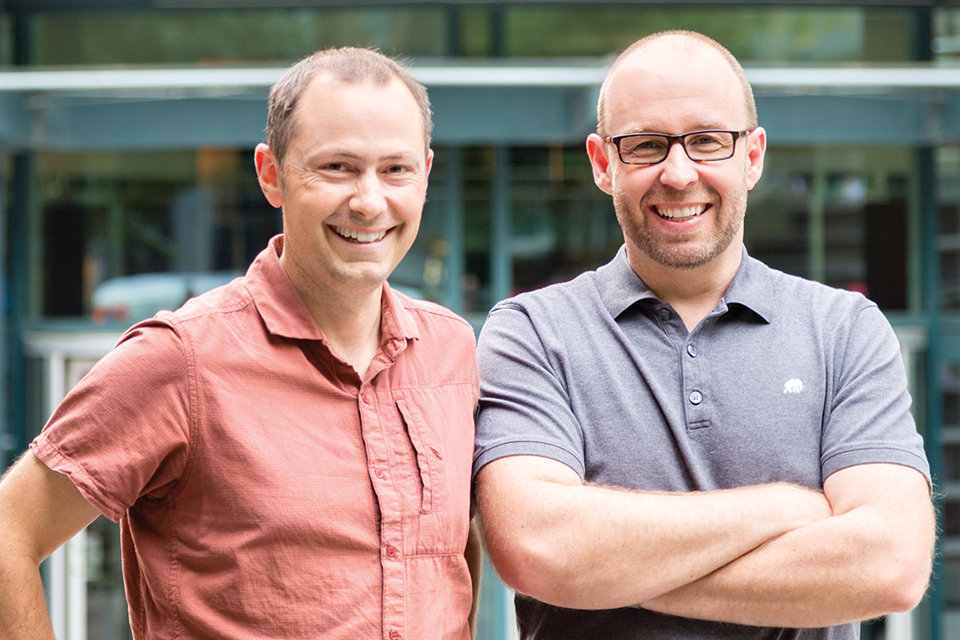
Creating sustainable spaces employees love
By Joseph Mathieu
OTTAWA’S DATA ANALYTICS trailblazer Klipfolio, a firm that’s grown almost 300 percent in the last three years, is about to move into its bold new offices at the World Exchange Plaza.
Keeping the creative needs of its workforce top of mind, the interior was designed specifically for its teams to solve problems and innovate new ways to work every day. For almost a decade, Klipfolio has been at 176 Gloucester Street, where they currently lease the entire second floor, two separate offices on the third, and another on the fourth.
“I’m proud of the growth we’ve experienced at our current office,” says Klipfolio’s President and CEO Allan Wille, “but we’re ready for something new.”
Their new space, designed by Linebox Studio, was made to foster creativity. It will include many collaborative meeting rooms, several private phone rooms, a larger kitchen (where impromptu conversation can still lead to innovative ideas), and more screen walls displaying Klipfolio’s own dashboard product tracking their business. With 30-foot ceilings, mezzanine catwalks, and showers for cyclists and joggers, the new headquarters will cater to Klipfolio’s employees and recruits.
“There’s a business case for it,” says Andrew Reeves, owner and senior architect of Linebox. “Sometimes it’s misinterpreted as money just being thrown around. But finding talent and bringing them is part of the strategy. We spend more time in the office than we do at home, so why not make it comfortable and enjoyable?”
Reeves and his team of interior designers, architects, and code consultants get to know the building in question—every light fixture, table, and acoustic panel— while they also get to know the client’s history and values. They make sure the custom design becomes “their space, and not anyone else’s,” says Reeves. The former Landmark 7 Cinemas at the World Exchange Plaza will soon be Klipfolio 2.0, with its open concept reflecting a horizontal hierarchy and a pledge to be good corporate citizens. Getting all of the employees on the same floor will be the cherry on top of a new space that reflects Klipfolio’s humble culture, love of collaboration, and love your- workspace ethic.
Ottawa renovators and builders agree that good design is inherently green, and the concepts are intertwined as far as OakWood Designers & Builders is concerned. For more than 60 years, OakWood has brought to life sustainable and smart designs for residential and commercial clients across the region.
In 2016, the company launched its innovative, LEED Platinum-certified Design Centre in Orleans which features electricity from solar panels, top-of-the-line insulation technology, and a dozen geothermal wells for heating and cooling. Commercial clients see a playground of products in action and can examine innovative technologies in a real-life environment to design their own green buildings. They can also see how an office’s design helps a company differentiate itself from others.
“Making an investment in these types of technologies and systems enables an owner to differentiate their building and offer a more attractive, healthier workspace that will be very appealing to top talent,” says President and CEO John Liptak.
OakWood’s imaginative display of a smart building is a prime example of how the walls around a company can nurture a company’s culture. Its employees can convey the worth of their work from right inside their state-of-the-art HQ, where they can share how green design motivates them every day.
City Building and the Creative Economy
By Ruth Seeley
Ottawa has experienced many transformations from lumber town to capital. Over the next three decades, a series of projects will lead to yet another metamorphosis in the way we navigate, work, and play in our city.
Major redevelopment projects yet to come include LeBreton Flats, the former CFB Rockcliffe, and the Oblate lands on Main Street. These follow recently and nearly completed projects, including the transformation of Lansdowne Park, the newly renovated National Arts Centre, the close to $20-million redesign of the Ottawa Art Gallery (to be completed in fall of 2017), and the renovation of the Canada Science and Technology Museum (reopening mid-November 2017) to focus on the present and future with fewer artifact cases and more interactive exhibits such as a car-building station where kids can experiment with automotive design. The Ottawa Hospital redevelopment and the redesign of Nepean Point are two others.
Four times larger than its existing space, the Ottawa Art Gallery will now be able to partner with other galleries to bring more—and better—programming. One of the first will be a solo exhibit of New York designer Karim Rashid, who studied industrial design at Carleton and whose work ranges from clothing design to chairs to manhole covers and, more recently, resort redesign.
The almost completed redesign of the National Arts Centre “opens” the building with walls of glass, 78,000 additional square feet of space including more washrooms, public areas for relaxing and rental spaces for performances and meetings correct the forbidding, bunker-like presentation of the original architecture.
When the Confederation Line opens in 2018, 70 percent of Ottawa residents will live within five kilometres of LRT stations, which serve as magnets for intensification. With hundreds of city buses no longer clogging Slater and Albert streets, the downtown core will become more pedestrian-oriented, and building landmark owners are already talking to the city about major reinvestments to capitalize on foot traffic emerging from LRT stations.
How does this drive the economy? In myriad ways. There are the short-term economic benefits of new and renovation design and construction. But the long-term benefits of good architecture and good design are less well known. Better views from hospital rooms reduce post-surgical complications. Better designed schools increase academic performance: one study indicates a correlation between more natural light and significant increases in academic performance.
As we transition from a resource-and manufacturing-based economy to a creative one, we can expect the transformations to continue.
